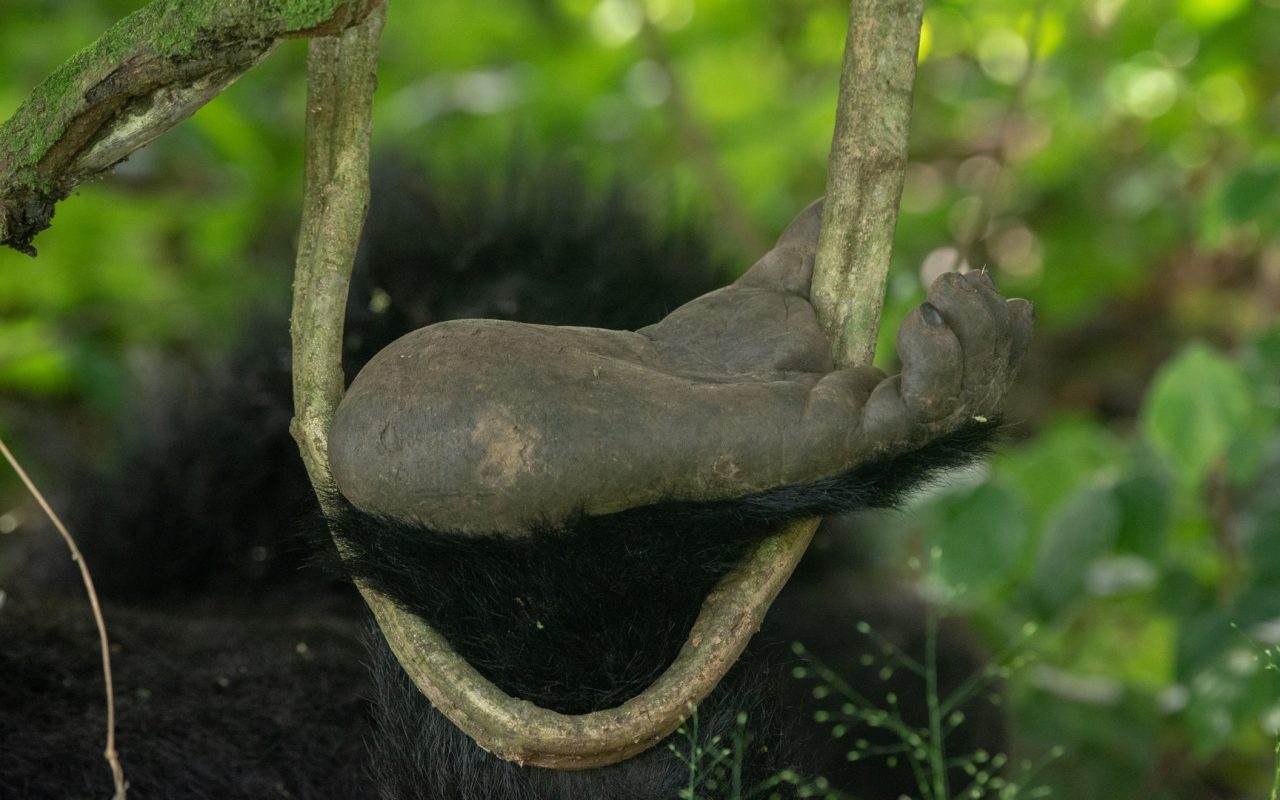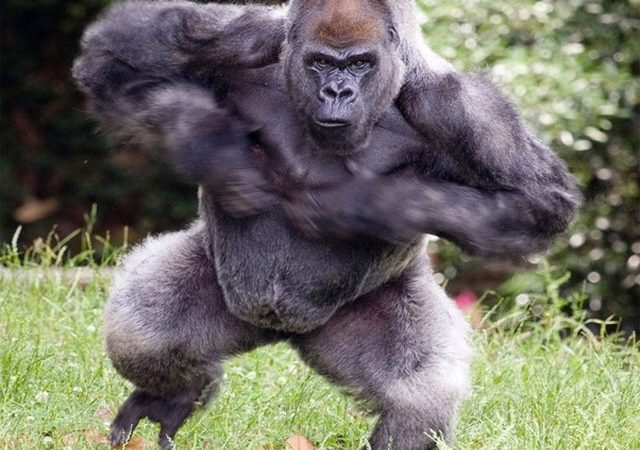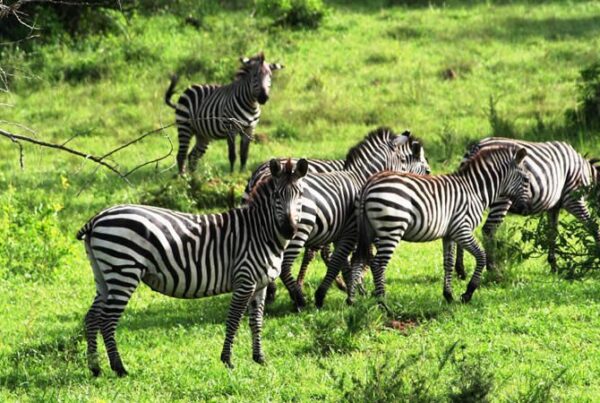Silverback Gorilla Appearance
The Majesty of the Silverback
In the shadowed forests of Central Africa, where mist drapes ancient trees and the echoes of nature reverberate through dense canopies, there exists a figure whose presence commands both awe and reverence. The silverback gorilla is not merely a creature of strength but a living embodiment of resilience, intelligence, and the profound complexity of wildlife. To observe the silverback is to witness a harmonious blend of power and gentleness, a testament to evolutionary mastery and the delicate balance of life within tropical forests.
The appearance of the silverback, distinct from its younger counterparts and female members of the troop, carries a wealth of information about its age, status, health, and lineage. Every feature, from the sweeping curve of its brow to the silvering of its fur, communicates stories of survival, social hierarchy, and adaptation. Scholars, conservationists, and travelers alike have been captivated by its form, and a careful study of the silverback’s appearance offers insights into the broader dynamics of gorilla society and the challenges faced in their preservation.
This article explores the physical characteristics of the silverback gorilla in exhaustive detail, from its muscular frame and facial structure to its unique markings and expressive gestures. It examines not only what is visible to the eye but also the functional significance of each trait, highlighting how nature has sculpted this primate to thrive in one of the planet’s most demanding environments.
The Overall Form: Size, Structure, and Posture
A silverback gorilla’s appearance is immediately striking due to its massive frame and upright posture. Adult males are significantly larger than females and younger males, with a height often reaching 1.7 to 1.8 meters when standing fully erect, and a weight ranging from 140 to 200 kilograms. This sheer size conveys authority within the troop and is a primary factor in social hierarchy.
The skeletal structure supports both strength and mobility. Broad shoulders, robust ribcages, and powerful limbs are characteristic, allowing the silverback to navigate steep, uneven forest terrain while displaying feats of strength when necessary. Muscles are pronounced, particularly in the arms and chest, reflecting adaptations for climbing, foraging, and occasional displays of dominance. Despite their bulk, silverbacks possess a grace in movement, capable of both deliberate, measured steps and sudden bursts of speed when chasing intruders or interacting with juveniles.
Posture plays a critical role in appearance and communication. While quadrupedal locomotion is typical during travel—known as knuckle-walking—the silverback can stand or briefly walk bipedally to assert presence or scan its surroundings. The upright stance enhances its visual dominance and is often employed during interactions with other males or potential threats.
The Fur: Texture, Coloration, and the Signature Silver
One of the most defining characteristics of a mature male gorilla is the silvering of the back, from which the name “silverback” is derived. This silver hair emerges gradually with age, typically between 12 and 15 years, signaling maturity and the assumption of leadership within the troop. The silvering often begins at the shoulders and extends down the back, creating a striking contrast with the otherwise black or dark brown fur that covers most of the body.
The fur itself is dense, coarse, and water-resistant, an adaptation to the humid, often rainy environments of tropical montane forests. It serves both protective and insulative functions, shielding the gorilla from cold temperatures at high elevations while providing some defense against insect bites and abrasions. Variations in fur color, texture, and thickness can indicate health, nutritional status, or seasonal adaptation. For instance, a healthy silverback exhibits a glossy sheen, whereas patches of dull or thinning hair may signal illness, stress, or malnutrition.
The contrast between silver and black is visually dramatic and serves social and ecological purposes. Within the troop, silverbacks are easily distinguishable, reinforcing their role as leaders. In the dense undergrowth, the color patterns may also play a subtle role in camouflage, allowing the silverback to navigate the forest with relative discretion when not engaged in displays of dominance.
The Head and Face: Intelligence and Expression
The head of the silverback gorilla is large and well-proportioned, with a prominent sagittal crest that develops with age. This ridge of bone along the top of the skull supports the attachment of large jaw muscles, enabling the gorilla to process fibrous plant material efficiently. The forehead is sloped rather than vertical, framing deep-set eyes that convey intelligence, emotion, and situational awareness.
Facial features are highly expressive, allowing the silverback to communicate subtle moods and intentions without vocalization. Brow ridges, lip movements, and subtle shifts in the eyes signal dominance, submission, curiosity, or reassurance. The nose is broad, with flared nostrils capable of detecting scents critical for foraging and social communication. Cheek pads, or flanges, may be present in some subspecies, though they are more common in Bornean orangutans; in gorillas, the robust facial musculature primarily supports feeding and social signaling.
The eyes, dark and reflective, are often described as conveying a depth of understanding and emotion that parallels human experience. Observers report a mixture of curiosity, vigilance, and empathy in the gaze of a silverback. This visual intelligence complements physical strength, ensuring that dominance within the troop is maintained through both action and perception.
Limbs and Hands: Power and Dexterity
The limbs of the silverback are among its most powerful attributes. The arms are longer than the legs, a proportion that facilitates knuckle-walking and climbing. Musculature is particularly developed in the deltoids, biceps, and forearms, reflecting the physical demands of travel, nest-building, and interactions within the troop.
Hands are both strong and dexterous. Fingers are long and flexible, allowing the silverback to grasp branches, manipulate food, and engage in delicate grooming of troop members. The opposable thumbs permit precise control, while the broad palms support weight-bearing during locomotion. Feet, although adapted for grasping rather than walking, provide stability on uneven terrain and play a role in climbing, climbing, and maintaining balance on steep slopes.
Functionality and appearance converge in the limbs. A silverback’s posture, stride, and gestures communicate authority and confidence, while each movement reflects adaptations honed over millennia for survival in dense forests and mountainous regions.
Torso and Chest: Strength Manifested
The torso of the silverback is a visual testament to strength. Broad shoulders taper to a robust waist, forming a V-shaped silhouette that communicates physical dominance. The chest is expansive and muscular, with well-developed pectorals supporting both upper body strength and chest-beating behavior, which is critical for communication within the troop and display of authority.
Ribcage structure accommodates large lungs, supporting sustained physical activity at high altitudes and during extended treks through rugged terrain. Abdominal musculature, though partially obscured by fur, is firm and functional, providing core stability that enhances climbing and rapid locomotion. This combination of skeletal robustness and muscular definition defines much of the silverback’s imposing appearance while underpinning behaviors essential for leadership and protection.
Distinguishing Features and Individual Markings
Despite shared characteristics, each silverback possesses unique traits that allow identification by both humans and other gorillas. Scars, fur patterns, nose prints, and facial asymmetries serve as markers of individuality. These features are often shaped by past encounters with rivals, predators, or environmental challenges.
Nose prints, in particular, function similarly to human fingerprints. The ridges and patterns are distinctive and can be used by researchers to track individual gorillas over time. Scars from territorial disputes or accidental injuries reveal the silverback’s history within the troop and offer insights into social dynamics and resilience. Even subtle variations in fur texture or color provide clues to age, health, and environmental adaptation.
Functional Significance of Appearance
The appearance of the silverback is not solely aesthetic; every aspect serves a purpose. Muscular build ensures survival in challenging terrain and protection of the troop. Facial expressiveness facilitates nuanced communication and conflict resolution. Fur density and coloration contribute to thermoregulation and social recognition. Even the signature silver on the back signals maturity and establishes social hierarchy.
In essence, the silverback’s appearance reflects a delicate balance between biological necessity and social function, demonstrating how evolution has optimized the species for both environmental adaptation and complex social life.
The Silverback in Observation and Conservation
Understanding the appearance of the silverback is critical not only for biological study but also for conservation efforts. Recognizing age, sex, health status, and individual traits enables researchers and park authorities to monitor populations, detect signs of stress or disease, and manage habitat protection effectively.
For visitors on gorilla treks in Uganda, Rwanda, or the Democratic Republic of Congo, the silverback’s appearance provides both aesthetic and educational insight. Observing the combination of strength, gentleness, and social signaling enhances appreciation for the species while underscoring the importance of responsible and ethical tourism.
Conservation programs benefit when the visual cues of silverbacks are carefully documented, allowing long-term studies that inform policy and habitat management. The appearance of each individual becomes a story in itself, linking science, education, and the broader goals of species preservation.
Witnessing the Power of Form
The silverback gorilla’s appearance is a remarkable synthesis of strength, intelligence, and evolutionary design. From its muscular build and silvered fur to its expressive face and dexterous limbs, every aspect communicates a blend of authority, adaptability, and care for its family. The form of the silverback reflects both the demands of the natural environment and the intricacies of social life, making each encounter a profound lesson in resilience and balance.
For travelers who aspire to witness this majestic creature in the wild, the forests of Central Africa provide a rare opportunity. The experience of observing a silverback up close is transformative, fostering deep respect for wildlife and an enduring awareness of conservation challenges.
For those wishing to undertake such life-changing journeys, tours and safaris across Africa can be expertly arranged through WildHorn Africa, a trusted provider committed to ethical wildlife experiences, conservation education, and immersive encounters that honor both the creatures of the wild and the people who protect them.





 WildHorn Africa – Authentic and unforgettable tours across Africa, guided by local experts who know the land, wildlife, and culture best.
WildHorn Africa – Authentic and unforgettable tours across Africa, guided by local experts who know the land, wildlife, and culture best.


